The Pain of Being Misunderstood—And How to Cope
😔 Why Being Misunderstood Hurts So Much
Few emotional wounds cut as deeply as being misunderstood—especially when it happens in the moments you most need empathy. Whether it’s a friend who assumes the worst, a doctor who dismisses your symptoms, a partner who interprets your silence as rejection, or a parent who misreads your pain as rebellion—the result can be profoundly isolating.
To be misunderstood is to feel:
- Invisible (“They don’t really see me.”)
- Misjudged (“They think I’m someone I’m not.”)
- Emotionally unsafe (“If I can’t explain myself, I can’t be accepted.”)
- Alone (“No one gets what I’m going through.”)
And if this happens repeatedly—especially during childhood or traumatic experiences—it can shape your entire sense of self.
But you are not broken for needing to be understood. You are human. And while not everyone will be able or willing to meet you with clarity and care, you can learn to anchor your truth even when others miss it.
🧠 What Happens in the Brain When You're Misunderstood
When someone misreads you, your brain can interpret it as a social rejection or threat—activating the same neural pain centers involved in physical pain.
This isn’t just in your head. Being misunderstood lights up areas of the brain like the anterior cingulate cortex, which processes emotional suffering.
And when misunderstanding triggers shame, it may also activate old memories:
- Moments when your voice was silenced
- Times when your needs were ignored or punished
- Situations where being misunderstood led to danger, loss, or abandonment
This is why the pain can feel disproportionate—it’s not just about this one interaction. It’s about a deeper rupture in connection.
🧭 Step 1: Validate the Pain Without Explaining It Away
People might say:
- “They probably didn’t mean it that way.”
- “You’re overreacting.”
- “Just let it go.”
But those responses only reinforce the pain. Instead, try validating yourself:
“It makes sense that I’m hurt. I was trying to express something meaningful, and it wasn’t received.”
Let that be enough. You don’t have to rationalize your pain to legitimize it.
You felt unseen. That’s real. And it matters.
💬 Step 2: Clarify What You Wanted to Be Understood
Sometimes we don’t even know exactly what we needed to be seen for. Take a moment to reflect:
- Was it your intention?
- Your emotional state?
- Your boundaries?
- Your identity?
- Your pain?
Ask yourself:
“What did I need them to get about me in that moment?”
This clarity can help soothe the chaos inside—and guide your next steps, whether it’s setting a boundary, having a follow-up conversation, or just journaling through it.
🗣️ Step 3: Let Go of the Need to Convince

One of the most painful traps is trying to “explain yourself into being understood.” You might find yourself overexplaining, defending, repeating, or pleading—only to feel more misunderstood.
At some point, the most self-protective thing you can say is:
“I know what I meant, even if you don’t.”
This doesn’t mean you stop communicating or seeking connection. It just means you stop trying to force clarity from someone who isn’t open to it.
Your peace is not dependent on their comprehension.
🔄 Step 4: Rewrite the Internal Narrative
Being misunderstood often leaves a residue: self-doubt.
You might think:
- “I must have said it wrong.”
- “Maybe I’m just hard to love.”
- “I always mess things up.”
Stop. Breathe. Return to your truth.
Try replacing those thoughts with:
- “I did my best to express myself clearly.”
- “I’m not too much. I’m not too confusing. I’m allowed to exist as I am.”
- “Even if they didn’t get it, I do.”
This isn’t about denial. It’s about reclaiming your sense of self from the stories others place on you.
👥 Step 5: Talk to Someone Who Does Get It
Even one validating connection can repair the pain of being misunderstood.
Reach out to:
- A friend who listens without fixing
- A therapist who helps you feel safe in your story
- A support group where people share your experience
- Online communities or writers who reflect your truth
Tell someone:
“I don’t need solutions—I just need to feel understood right now.”
Sometimes, the antidote to misunderstanding isn’t explanation. It’s witnessing.
🪞 Step 6: Understand Your Triggers (Especially from Childhood)
If being misunderstood triggers a powerful emotional reaction—rage, shame, panic—it might connect to earlier wounds:
- Were you misunderstood or blamed often as a child?
- Were your emotions minimized or misread?
- Were you called “too sensitive,” “dramatic,” or “hard to deal with”?
Understanding these patterns doesn’t blame the past—it empowers you to respond instead of react.
When a deep wound is touched, remind yourself:
“This is old pain. I’m not helpless now. I can choose how I respond.”
🛡️ Step 7: Create Boundaries Around Misunderstanding
Not everyone will try to understand you—and some people will willfully misunderstand you. That’s not your fault. But you can protect yourself.
Set emotional boundaries with:
- People who twist your words
- Those who dismiss or mock your feelings
- Anyone who uses misunderstanding to manipulate or gaslight you
- Environments that consistently fail to accommodate your communication needs
Boundaries might sound like:
- “I don’t feel safe continuing this conversation right now.”
- “That’s not what I said, and I won’t argue about it.”
- “I’m allowed to disagree without being made wrong.”
You’re not being dramatic. You’re being discerning.
🌱 Step 8: Practice Self-Expression That Feels Safe
If you’ve been chronically misunderstood, you may start to shut down, avoid speaking up, or hide parts of yourself.
Instead of silencing your voice, try rebuilding it gently:
- Write letters you don’t send
- Create art that expresses what words can’t
- Speak aloud to yourself what you wish someone had said
- Use affirmations that reconnect you to your inner truth
- Share in safe spaces with people who’ve earned your trust
Your voice matters—even when it’s not understood by everyone. Especially then.
🌀 Step 9: Accept That Not Everyone Can Meet You Deeply
Some people won’t understand you—not because you’re incomprehensible, but because they’re not listening with curiosity. Or they’re interpreting you through their own wounds. Or they simply don’t have the emotional capacity.
And that’s hard. But it doesn’t mean you’re not worthy of connection.
“Just because they didn’t understand me doesn’t mean I don’t deserve to be understood.”
Let that be a guiding truth.
🧘 Step 10: Anchor in Self-Understanding

When all else fails, come home to yourself.
Build practices that deepen your connection to your own emotions, thoughts, and values:
- Daily check-ins: “How am I feeling right now?”
- Journaling: “What do I wish someone could understand about me today?”
- Mirror affirmations: “I see you. I hear you. I believe you.”
- Meditation: Not to escape, but to listen inward.
The more you understand yourself, the less disoriented you’ll feel when others don’t.
You become your own steady ground.
💞 Step 11: Redefine What It Means to Be “Seen”
Being “understood” doesn’t always mean someone gets every word perfectly. Sometimes it means they:
- Hold space with kindness
- Acknowledge your perspective
- Stay present even when confused
- Ask questions instead of assuming
- Make you feel emotionally safe, even if they don’t fully relate
Seek people who do this. Not perfection. Not psychic powers. Just real, present connection.
🔄 Step 12: Rewrite the Experience Through Meaning
You can’t always undo the pain of being misunderstood. But you can reclaim meaning from it:
- You gain discernment—learning who’s safe and who’s not
- You deepen compassion—for yourself and for others
- You grow resilient—not by hardening, but by honoring your truth anyway
Sometimes, the ones who misunderstand you most will be the ones who taught you to understand yourself best.
✨ Final Thoughts: You Deserve to Be Understood (Even If It Takes Time)
Being misunderstood doesn’t mean your message was flawed. Or your feelings invalid. Or your voice too much.
It means the receiver couldn’t—or wouldn’t—receive you clearly.
That’s not the end of your story.
You are not too confusing.
You are not too much.
You are not unworthy of being known.
You are allowed to take up space, speak your truth, and grieve when it’s missed.
And most of all—you’re allowed to find peace in your own self-understanding, even when the world doesn’t fully get you yet.
📚 Resources and References
Brown, Brené. The Gifts of Imperfection (2010)
Lerner, Harriet. The Dance of Connection (2001)
Neff, Kristin. Self-Compassion: The Proven Power of Being Kind to Yourself (2011)
Dr. Thema Bryant – Podcast: The Homecoming Podcast
Instagram communities: @notesfromyourtherapist, @the.holistic.psychologist, @nedratawwab
Therapy directories: psychologytoday.com, inclusive therapists
Related Posts
-

Learning to Feel Safe in Your Body Again
If your body no longer feels like a safe place—due to trauma, chronic illness, or anxiety—you’re not alone. This guide offers gentle, body-based strategies to help you reconnect with yourself, regulate your nervous system, and rebuild trust in your physical experience.
-

When You Feel Emotionally Unlovable: Challenging the Lie
Feeling unlovable because of your emotions, illness, or sensitivity? You’re not broken—you’re healing. Learn how to challenge the lie of emotional unworthiness and rebuild self-trust, one compassionate step at a time.
-
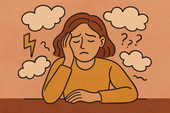
Brain Fog and Fatigue: How to Stop Blaming Yourself
Struggling with brain fog or chronic fatigue? You’re not lazy or failing. Learn how to stop blaming yourself for symptoms caused by MS or chronic illness, and start embracing a more compassionate path to healing and self-understanding.
-

Creating an Emotional Support Team You Actually Trust
Tired of feeling unsupported or misunderstood? Learn how to build an emotional support team you actually trust—with people who see you, hold space for you, and respect your boundaries, especially when living with MS or chronic illness.
-

MS, Vulnerability, and the Fear of Being Seen
Living with MS can make vulnerability feel unsafe. Learn why so many people with MS hide their struggles—and how to gently move toward authenticity, self-acceptance, and deeper connection without shame.
-
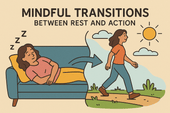
Mindful Transitions Between Rest and Action
Struggling to shift between rest and activity without guilt or overwhelm? This guide offers gentle, mindful strategies to make transitions feel more natural, intentional, and supportive of your nervous system.
-
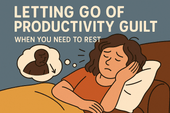
Letting Go of Productivity Guilt When You Need to Rest
Struggling with guilt every time you try to rest? Learn how to release productivity shame, understand why rest matters, and embrace a more compassionate rhythm for healing and recovery—without feeling lazy.
-

Rebuilding Energy Reserves Without Shame
-

What to Do If You Feel Emotionally Invalidated by Doctors
Feeling emotionally invalidated by your doctor can be deeply distressing. Learn how to recognize medical gaslighting, validate your own experience, and advocate for better care when you’re not being heard.
-

How to Rest Without Feeling Lazy
Rest isn’t laziness—it’s a necessary act of self-respect. Learn how to shift your mindset, let go of guilt, and embrace rest as a vital part of mental and physical well-being.
-
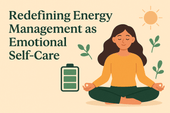
Redefining Energy Management as Emotional Self-Care
Energy isn’t just physical—it’s emotional. Learn how redefining energy management as emotional self-care can help you protect your peace, support your nervous system, and live more in tune with your true needs.
-
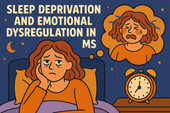
Sleep Deprivation and Emotional Dysregulation in MS
-
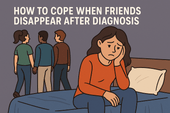
How to Cope When Friends Disappear After Diagnosis
Losing friends after a diagnosis can feel like another kind of grief. Discover why some friends disappear—and how to cope with the emotional fallout while building more supportive relationships.
-

How to Talk to Your Kids About MS Without Overwhelming Them
Struggling with how to explain MS to your kids? Learn how to talk to children of all ages about multiple sclerosis with honesty, clarity, and emotional safety—without overwhelming them.
-

MS and the Fear of Emotional Abandonment
The fear of emotional abandonment is common for people with MS. This article explores why it happens, how it impacts your relationships, and how to create emotional safety and healing.
-
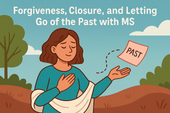
Forgiveness, Closure, and Letting Go of the Past with MS
Living with MS often brings emotional wounds from the past. Learn how forgiveness, closure, and letting go can help you heal emotionally—and reclaim peace in the present.
-
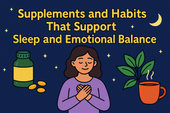
Supplements and Habits That Support Sleep and Emotional Balance
Struggling with poor sleep and emotional ups and downs? Discover calming supplements and daily habits that support deep rest and mental well-being—backed by science and easy to implement.
-
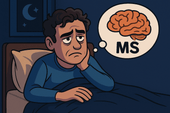
When Insomnia Feels Like Your MS Brain Won’t Turn Off
Struggling to sleep with MS? When your brain won’t shut off at night, insomnia feels relentless. Learn what causes it—and discover science-backed strategies to calm your mind and finally rest.
-

The Emotional Toll of Waking Up Tired Every Day: Why It Hurts More Than You Think
Waking up tired every day takes a deep emotional toll—from mood swings to lost motivation and self-doubt. Learn why chronic fatigue hurts more than you think and how to gently reclaim your mornings.
-
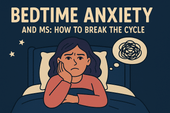
Bedtime Anxiety and MS: How to Break the Cycle
Bedtime anxiety is a common struggle for people with MS—and it’s more than just racing thoughts. Learn how MS-related stress, nervous system dysregulation, and fear of symptoms can create a cycle of sleeplessness, and discover practical, calming strategies to finally reclaim restful nights.
-
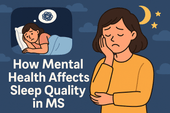
How Mental Health Affects Sleep Quality in MS: Breaking the Cycle of Fatigue and Emotional Distress
Struggling to sleep when you have MS? Discover how anxiety, depression, and neurological changes impact your rest—and what you can do to reclaim it. From CBT-I and calming supplements to lifestyle tips that support both mental health and sleep, this guide offers practical strategies for better nights.
-

Learning to Love Your Life (Even When It’s Not What You Expected)
Your life may not look how you imagined—but it’s still worth loving. Learn how to find peace, purpose, and joy in the unexpected.
-
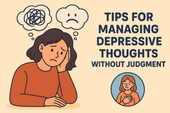
Tips for Managing Depressive Thoughts Without Judgment
Learn how to meet depressive thoughts with compassion, not shame. These gentle, research-backed tools help you manage low moods without self-judgment.
-
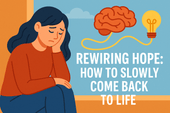
Rewiring Hope: How to Slowly Come Back to Life
Feeling emotionally numb or disconnected? Learn how to gently rebuild hope, one small sensory step and spark of life at a time.
-
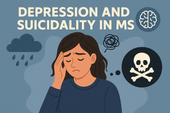
Depression and Suicidality in MS: A Conversation That Needs to Happen
Depression and suicidality in MS are real—and urgent. Learn why we must talk about it, how to spot warning signs, and where to find help and hope.
-

Finding Meaning When Life Feels Empty
Feeling disconnected or numb? Discover gentle ways to find meaning again—even in emptiness—through daily rituals, reflection, and purpose.
-
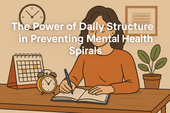
The Power of Daily Structure in Preventing Mental Health Spirals
Daily structure can prevent mental health spirals by creating safety, routine, and self-trust—especially for those with MS, depression, or anxiety.
-

Healing from Emotional Flatness with Sensory Rituals
Feeling emotionally numb or disconnected? Discover how sensory rituals can gently restore pleasure, presence, and emotional resilience.
-

The Role of Light Therapy for Seasonal Depression and MS
Can light therapy ease seasonal depression in people with MS? Discover the science, benefits, and how to use it safely for better mood and energy.
-
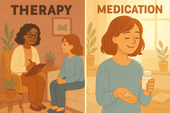
Medication vs Therapy: Treating MS-Related Depression Effectively
Explore whether therapy, medication, or both are best for treating MS-related depression. Understand what works, when—and why combination care is often ideal.
-

How to Support a Partner with MS and Depression
Learn how to support a partner living with MS and depression—practical tips, emotional tools, and ways to protect your own mental health too.
-

The Emotional Cost of Losing Your Old Life
Losing your old life to MS isn’t just about physical symptoms—it’s about grieving the identity, dreams, and freedom you once had. This article explores the emotional toll of invisible grief and how to begin healing without denying the pain.
-
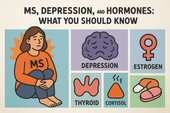
MS, Depression, and Hormones: What You Should Know
MS-related depression isn’t always just emotional—it can be hormonal. Discover how thyroid, sex, and stress hormones influence mood in MS, why women may feel worse during PMS or menopause, and what signs to look for when hormones may be driving emotional instability.
-

MS and Anhedonia: Reclaiming Pleasure One Step at a Time
Anhedonia—feeling emotionally flat or disconnected—is a common but misunderstood symptom of MS depression. This article explores how neuroinflammation, dopamine disruption, and fatigue can dull your sense of joy—and how small, gentle steps can help you begin to feel again.
-
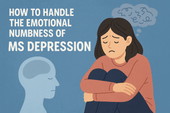
How to Handle the Emotional Numbness of MS Depression
Emotional numbness in MS depression doesn’t always look like sadness—it can feel like nothing at all. Learn why this disconnection happens, how it's tied to neuroinflammation and nervous system overload, and discover science-backed strategies to gently reconnect with your emotions.
-
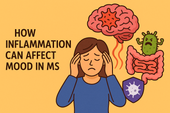
How Inflammation Can Affect Mood in MS
Mood swings and emotional numbness in MS aren’t just psychological—they can be driven by immune system inflammation. This article explores how inflammatory cytokines affect the brain, why mood changes are often biological, and what you can do to calm your nervous system from the inside out.
-
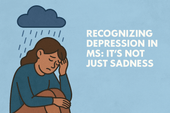
Recognizing Depression in MS: It's Not Just Sadness
Depression in multiple sclerosis (MS) is more than just sadness—it can be a neurological symptom, a side effect of inflammation, or a silent weight that masks itself as fatigue or emotional numbness. This article helps you recognize the hidden signs of MS-related depression, understand the science behind it, and explore real treatment options that support both mental and physical health.
-

Is Cryotherapy Safe for MS? Pros, Cons, and How It Compares to Cold Plunges
Cryotherapy promises quick recovery, inflammation reduction, and mood support—but is it safe for people with MS? This article breaks down the science, risks, and real-life benefits of cryotherapy for multiple sclerosis. You’ll also learn how it compares to cold plunges and which option may be better for calming flares and regulating your nervous system.
-

Can Cold Plunges Help Reduce Inflammatory Flares in MS?
Flares in multiple sclerosis (MS) are often driven by inflammation—but what if cold water could help turn down the heat? This in-depth article explores how cold plunges may help reduce flare frequency and intensity in MS by calming the immune system, lowering pro-inflammatory cytokines, and regulating the nervous system. Learn how to safely use cold exposure as part of your MS recovery routine.
-

How Cold Exposure May Help Regulate MS-Related Mood Swings
Mood swings are a common but overlooked challenge in multiple sclerosis (MS). This article explores how cold exposure—like cold plunges and showers—may help regulate emotional ups and downs by calming the nervous system, reducing inflammation, and boosting mood-enhancing chemicals. Learn how to use this natural tool safely to support your mental and emotional resilience with MS.
-

MS Fatigue Toolkit: Why Cold Plunges Deserve a Spot in Your Daily Routine
Fatigue is one of the most debilitating symptoms of multiple sclerosis (MS)—often invisible, misunderstood, and overwhelming. While no single tool can eliminate it, building a personalized fatigue management toolkit can make life more manageable. One surprising contender? Cold plunges. In this article, we explore why cold water immersion might be the refresh button your nervous system needs—and how to safely make it part of your MS fatigue routine.
-
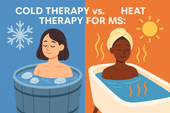
Cold Therapy vs. Heat Therapy for MS: Which One Helps More?
Managing multiple sclerosis (MS) often means navigating symptoms like fatigue, spasticity, pain, and nerve dysfunction. But when it comes to using temperature-based therapies, there’s a question many patients face: Should I be using cold or heat? In this in-depth guide, we explore the benefits, risks, and best use cases of cold therapy vs. heat therapy for MS.
-
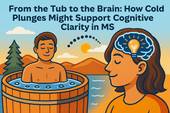
From the Tub to the Brain: How Cold Plunges Might Support Cognitive Clarity in MS
Cognitive fog is one of the most frustrating symptoms of multiple sclerosis (MS). But could cold plunges—those bracing dips into icy water—offer a surprising path to mental clarity? This article explores the emerging science behind cold exposure, brain function, and how a cold tub might help people with MS sharpen focus, lift brain fog, and reset their nervous system.
-
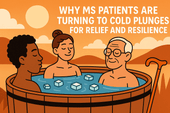
Why MS Patients Are Turning to Cold Plunges for Relief and Resilience
Cold plunges are no longer just for elite athletes and wellness influencers. A growing number of people with multiple sclerosis (MS) are turning to cold water immersion to ease symptoms, build nervous system resilience, and find calm in the chaos of chronic illness. This article explores why—and how—you might want to give it a try.
-

Cold Plunge Therapy: A Hidden Gem for People with MS?
Cold plunge therapy—once the domain of elite athletes and biohackers—is gaining attention among people with multiple sclerosis (MS). Could it help reduce inflammation, calm the nervous system, and ease MS symptoms like fatigue and spasticity? In this article, we dive deep into the science, benefits, safety, and practical application of cold plunges for MS recovery and symptom relief.
-
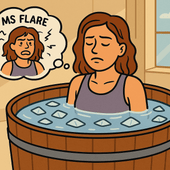
Finding Relief in the Midst of a Flare
MS flares can leave you feeling overwhelmed, exhausted, and mentally foggy. Cold water therapy is emerging as a promising tool to help reset the body and mind after a flare. This article explores how cold exposure supports recovery, calms the nervous system, and can be safely added to your daily routine.
-
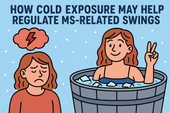
How Cold Exposure May Help Regulate MS-Related Mood Swings
Mood swings in multiple sclerosis (MS) can feel like emotional whiplash—one moment calm, the next overwhelmed, angry, or hopeless. While medications and therapy help, many people with MS are exploring natural strategies to support emotional balance. One surprising tool gaining attention? Cold exposure. In this article, we explore how cold plunges and other forms of cold therapy may regulate the nervous system, stabilize mood, and offer emotional relief for people with MS.
-
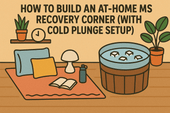
How to Build an At-Home MS Recovery Corner (with Cold Plunge Setup)
Create your personal MS recovery oasis at home—complete with a cold plunge setup. Learn how to design a space that supports healing, reduces inflammation, and helps you manage symptoms naturally.
-
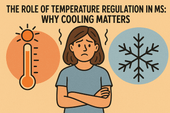
The Role of Temperature Regulation in MS: Why Cooling Matters

















































